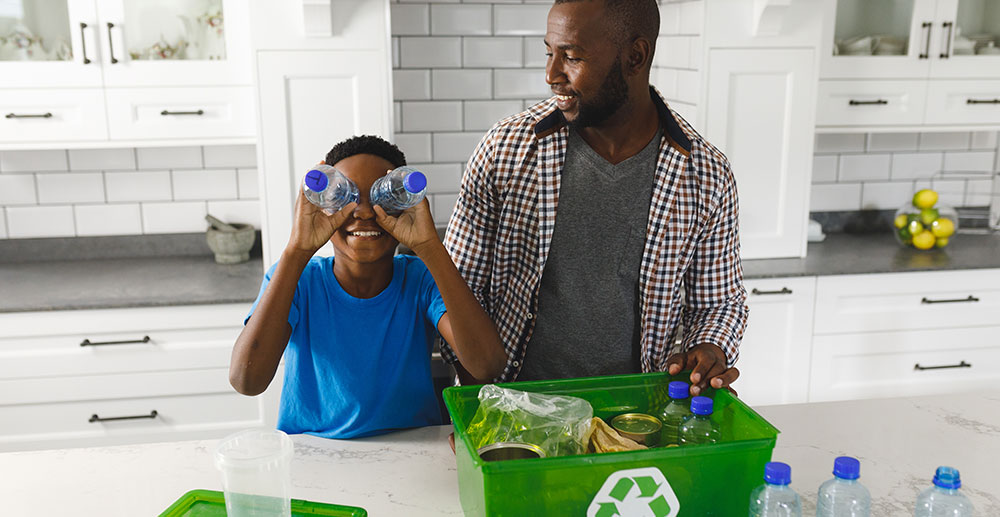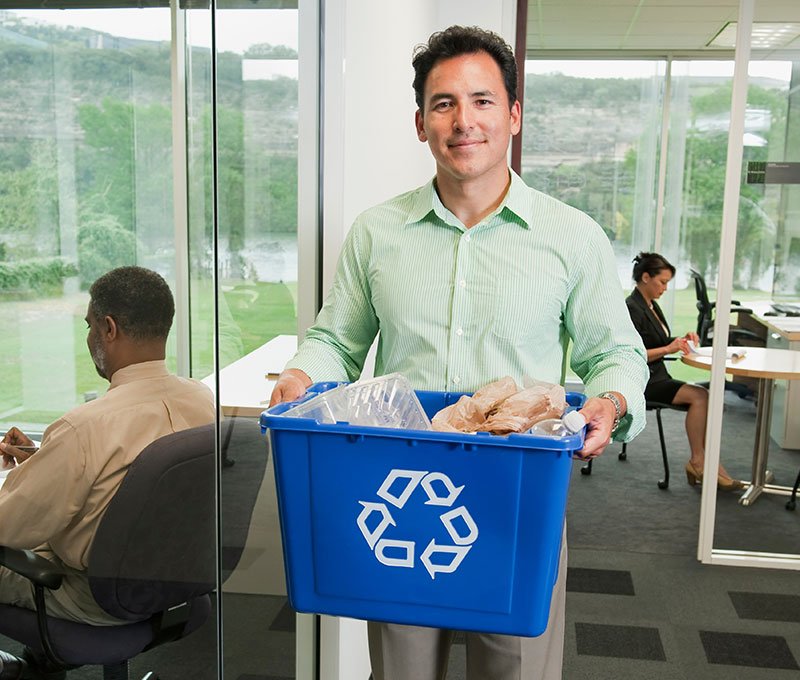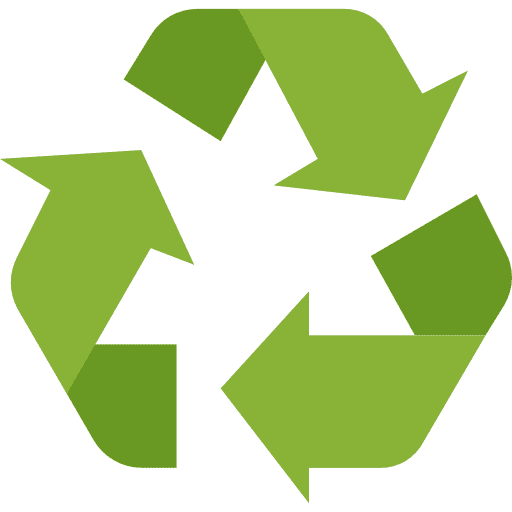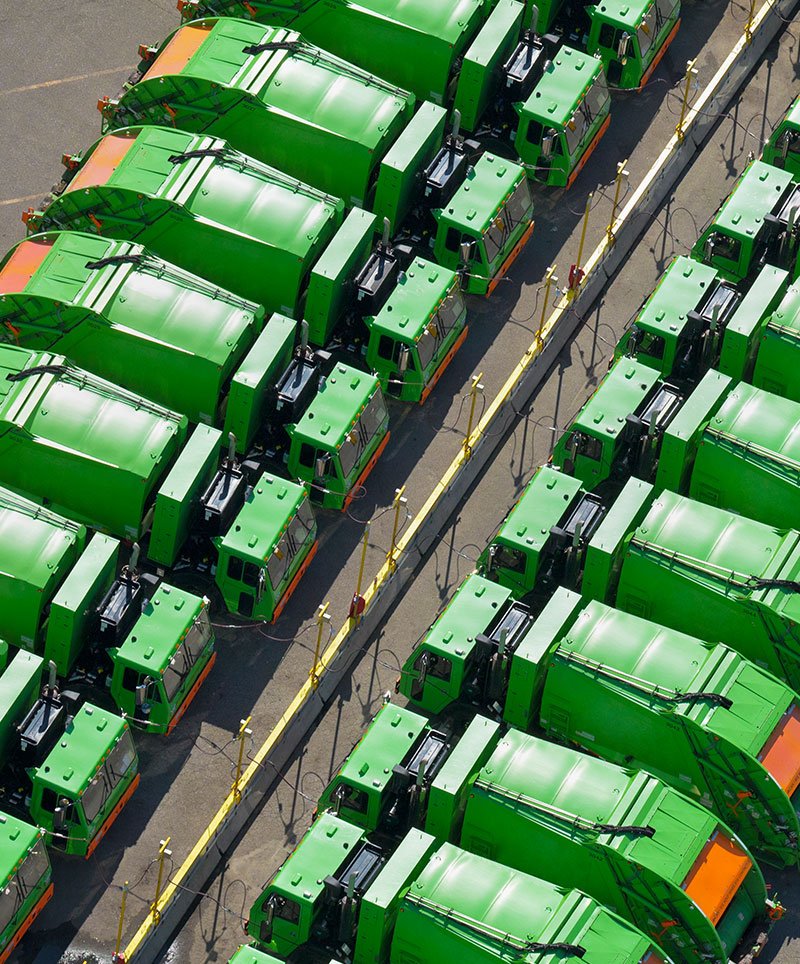Recycling
Waste in Motion
Recycling In Calgary
Recycling initiatives must make economic sense. It costs money to collect, sort, process, transport and market any commodity or product. Most importantly, there has to be an economically viable end use for recycled material.
For example
- Organic waste (like food waste) can be collected, processed and turned into compost
- Wood waste can be chipped and used for animal bedding, decorative landscape cover, or even used as an absorbent
- Metals like steel, tin, aluminum and copper have well established recycling opportunities
- Paper and cardboard also have well established recycling programs
- Most plastics can be suitable for recycling, but there are exceptions
- Tires can be collected and recycled
- Even shrink wrap can be recycled when there are sufficient quantities to justify separation

It all depends on where you are located and the level of market demand for recyclable waste materials. Many cities now have recycling bins and carts to aid in recycling initiatives. Each city is slightly different in their collection methods and recycling strategies, but in general waste collection is split into three main categories:
- Municipal Solid Waste (garbage produced by households or businesses)
- Mixed Recycling (Paper / Cardboard / Tin Can / Alum / Plastic etc)
- Organics Recycling (food waste and usually yard trimmings)
Waste in Motion believes in developing recycling strategies that are:
- Implementable
- Sustainable
- Scalable and
- Realistic
As children, we learn the three “R’s” of the recycling philosophy, namely to REDUCE, REUSE and RECYCLE. Diverting waste from our landfill waste stream is a good thing, for sure. But reducing your consumption, and reusing your material are the easiest steps towards enacting a practical waste reduction strategy. Recycling is always last.
Reduce
Reducing your consumption is the simplest option to implement and requires the least energy. Stop creating waste and you don’t have a problem!
If you’re a little older, you might remember that computer software used to come in huge display boxes within which you could fit dozens of CD disks! A continuous reduction in box size eventually culminated in their elimination once cloud based downloads became the norm.
“Blister packaging” has replaced much of the cardboard packaging we used to see, but now we have new challenges disposing of the plastic packaging. There always more we can do to reduce the amount of waste generated.
As a consumer, buying items in bulk is a simple and effective way to reduce your waste footprint. Convenience often produces waste; think single serve coffee cups, single use plastic bags, or individual candy wrappers. You can make an impact by utilizing a reusable coffee cup, keeping a reusable grocery tote bag in the car, or by purchasing in bulk. We get that buying in bulk isn’t always possible, but the point is to start thinking about how we as consumers can reduce our packaging waste by simply modifying our purchasing habits.

Reuse
Reusing an item is the next best thing. Things like clothes, furniture, household appliances, metal cutlery can be reused again and again. Wood scraps can be repurposed or reused into furniture, chess boards, knife holders or what have you. The automotive industry has a well established system of reusing auto parts from scrapped vehicles.
The trend towards using cloth bags for your groceries has led to a lowering of plastic bag consumption. Even though reusable products eventually wear out, it’s still better a better option than single use items.

Recycle
Recycling may appear to be the easiest option to enact, simply because you can throw something into a recycling bin and it will magically be “recycled”. Some items make sense to be recycled. Think of the energy and effort that goes into creating metal from rock ore; it’s massively energy dependant. It makes sense to recycle metals such as steel, iron, aluminum, copper etc. as we can refashion it into countless products again and again. The scrap metal markets are well established, and provide a conduit through which material can be bought, sold, traded and shipped to end users.
Electronics are now in demand for recycling, as many of them contain gold, nickel, copper, silver and platinum, as well as lesser known (but high demand) metals such as gallium, indium, and niobium.



Recycling Realities
Just because we can recycle something, doesn’t necessarily mean we should recycle it. There is no point expending energy to recycle a material if it doesn’t have an end use. A prime example is the fallacy in thinking that we can solve our waste management issues simply by collecting “recyclable” material. The solution is much more complex when you look at challenges such as end market demand stability, contamination, material volumes, transport distances, fuel prices, land costs, labour costs, political considerations etc. These are all key factors that must be managed and integrated for a successful recovery plan.
If the end use demand is high and there is a developed market for that commodity (like scrap metals), it makes sense to recycle that material. Similarly, if the energy expenditure to create the virgin product is very high (such as concrete) it will also make sense to reuse or recycle that product. But the truth is that recycling is not free. It costs money to collect, transport, sort, process, stockpile and distribute that material.
Most critically, there has to be a viable end market for those recycled products. If demand for that material is non existent, it probably doesn’t make sense to expend effort, money and energy in those recycling initiatives.
FAQ'S
Waste in Motion OFFERS Mixed Recycling services for materials such as paper, cardboard, tin can, aluminum, plastic, etc. and Organics Recycling services for materials such as food waste, yard trimmings, etc. Other items such as tires and even shrink wrap can be recycled when there are sufficient quantities to justify separation.
A Waste in Motion recycling bin can be serviced as often as 5 times a week, weekly, bi-weekly, every month or in any other mutually agreed upon intervals.
Yes. Contact us to have your very own Client Representative appointed to you for further details.
You can begin with the basics and set up 3 different bins labeled for 3 different types of recyclable waste: Paper, Plastic and Organic. You can add further bins for more uncommon types of recyclable waste as the need arises.
Each city is slightly different in their collection methods and recycling strategies, but in general waste collection is split into three main categories:
- Municipal Solid Waste (garbage produced by households or businesses)
- Mixed Recycling (Paper / Cardboard / Tin Can / Alum / Plastic etc)
- Organics Recycling (food waste and usually yard trimmings)
With increase in awareness and the realization of the short and long-term sustainability needs to recycle, more and more people are making a conscious effort to do their part for a sustainable and greener future. This has led to an increase in the types of waste being treated such as metals: steel, iron, aluminum, copper, etc. Electronics are also now in demand for recycling, as many of them contain gold, nickel, copper, silver and platinum, as well as lesser known (but high demand) metals such as gallium, indium, and niobium. The web can be a very helpful source in conveniently finding out which items are relevant to your area.
Yes. Contact us to have your very own Client Representative provide you further details.
Recycling benefits the environment in numerous ways. Recycling saves landfill space & energy, prevents pollution, conserves natural resources, preserves ecosystems and biodiversity, reduces greenhouse gas & carbon emissions, promotes a circular economy, etc.
Yes. Contact us to have your very own Client Representative provide you further details.
Waste In Motion values transparency in its business practices. Our Base Rates are inclusive of fuel surcharges, environmental fees, cost recovery fees and admin charges. This promises that our clients will not receive unpleasant surprises in their invoices.
Materials such as paper, cardboard, tin can, aluminium, plastic, food waste, yard trimmings, etc. Other items such as tires and even shrink wrap can be recycled when there are sufficient quantities to justify separation.
As often as 5 times a week, weekly, bi-weekly, every month or any other mutually agreed upon intervals.
Set up 3 different bins labelled for 3 different types of recyclable waste: Paper, Plastic and Organic. Add further bins for more uncommon types as the need arises.
In general waste collection is split into three main categories:
- Municipal Solid Waste (garbage produced by households or businesses)
- Mixed Recycling (Paper/Cardboard/Tin Can/Alum/Plastic, etc.)
- Organics Recycling (food waste and usually yard trimmings)
The web can be a very helpful source in conveniently finding out which items are relevant to your area.
Yes. Contact us for details.
No hidden fees or charges in our fine print. Waste In Motion ensures transparency in business practices. Our Base Rates are inclusive of surcharges, fees, and admin charges, and invoices.
